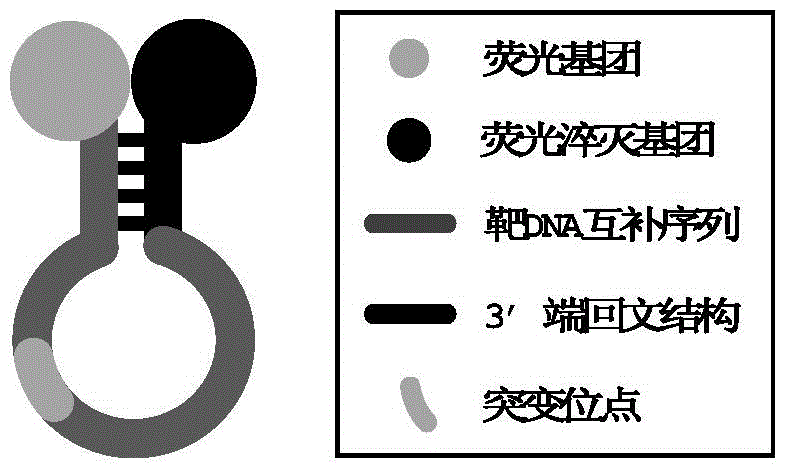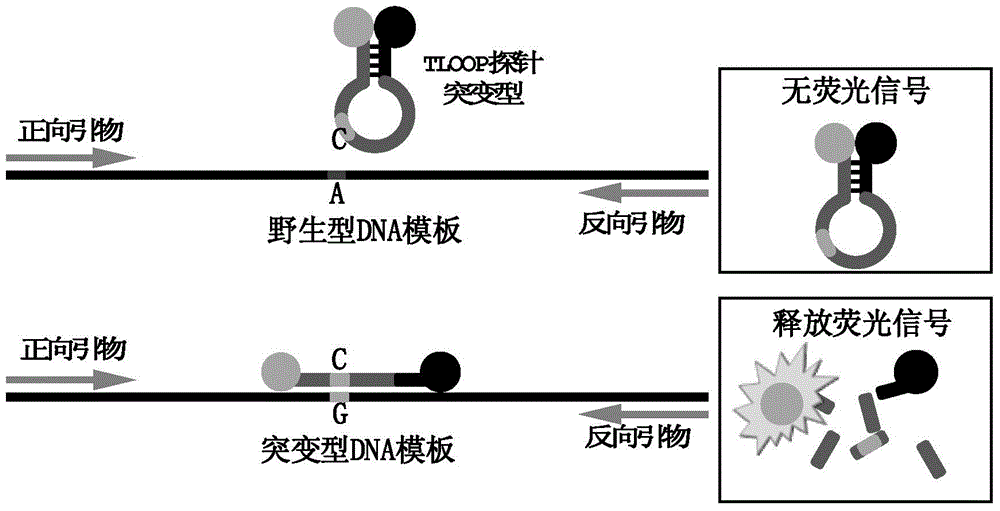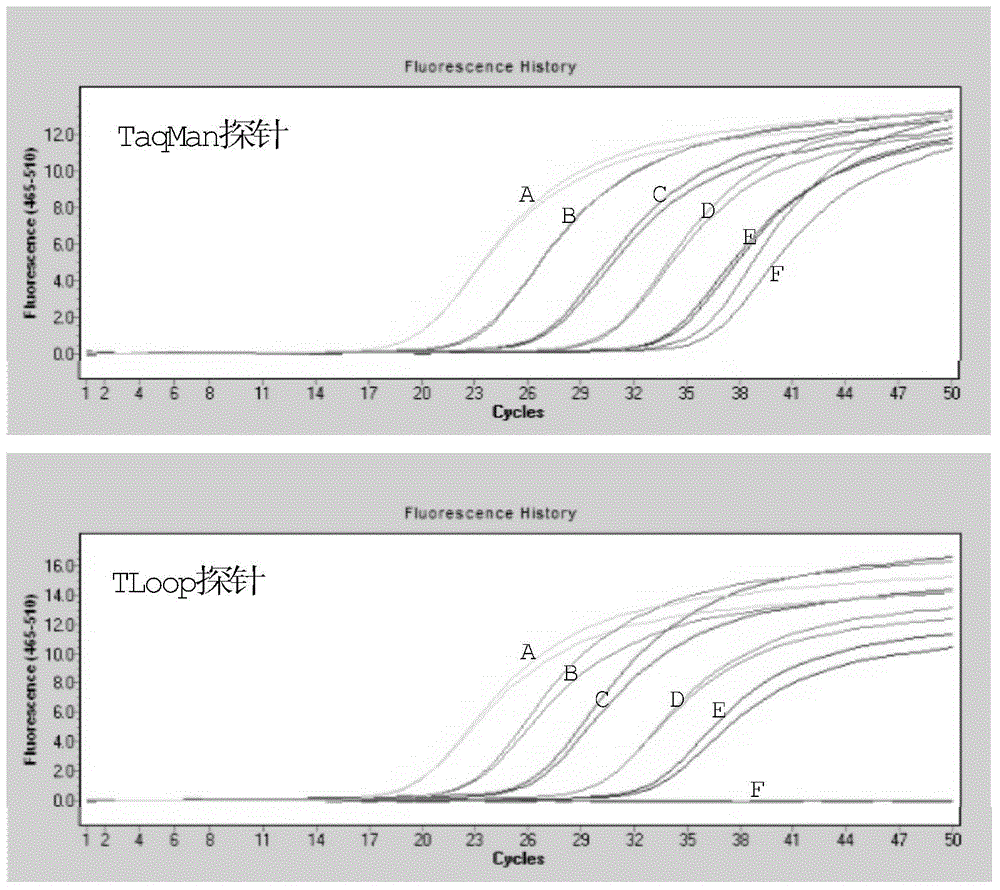Fluorescent probe for fluorescent quantitative PCR reactions
A fluorescent quantitative and fluorescent probe technology, applied in the field of oligonucleotide fluorescent probes, can solve the problems of incomplete fluorescence quenching, long distance, irreversible recovery of probes, etc., and achieve the effect of simple design
- Summary
- Abstract
- Description
- Claims
- Application Information
AI Technical Summary
Problems solved by technology
Method used
Image
Examples
Embodiment 1
[0026] Example 1: Detection of EGFR gene L858Q mutation by fluorescent quantitative PCR technology based on TLoop probe
[0027] 1. Probe and primer design and synthesis
[0028] Primers and probes were designed according to the mutation type of exon 21 of human EGFR gene L858Q. The sequence of the upstream primer E21F was 5'-cgcagcatgtcaagatca-3', the sequence of the downstream primer E21R was 5'-cctccttactttgcctcc-3', and the length of the PCR product was 92 bp. The sequence of TLoop probe TL858 is 5'-FAM-cagcagtttggcc gcccacaaactgctg-BHQ1-3'. TaqMan probe TM858 sequence is 5'-FAM-cagcagtttggcc gccca-BHQ1-3'. (The base framed by the probe is the mutation site, and the gray shaded part is the stem structure region)
[0029] The above-mentioned primers and probes were designed and sent to Yingwei Jieji Company for synthesis. The synthesized product was diluted with sterile deionized water to a final concentration of 100 μM for storage. Dilute 10 times when used.
[00...
Embodiment 2
[0036] Example 2: Detection of EGFR gene L858Q mutation by digital PCR technology based on neck loop probe
[0037] 1. Chip production
[0038] Fabricate PDMS chips by molding. First, mix the PDMS prepolymer and the curing agent according to the mass ratio of 10:1, vacuumize and degas, and pour it on the pre-prepared silicon wafer mold. In addition, apply a thin layer of the same PDMS on the glass slide, and let it stand for 1h. Put it on a 65°C hot plate for pre-curing for 30 minutes, peel off the PDMS poured on the mold, punch holes, attach the pipe surface and the coated glass coating surface together, and cover the injection tank One coverslip. Finally, put the bonded PDMS on a hot plate at 85°C and heat it for 10 minutes to make it bond.
[0039] 2. Probe and primer design and synthesis
[0040] Primers and probes were designed according to the mutation type of exon 21 of human EGFR gene L858Q. The sequence of the upstream primer E21F was 5'-cgcagcatgtcaagatca-3', the...
PUM
 Login to View More
Login to View More Abstract
Description
Claims
Application Information
 Login to View More
Login to View More - R&D
- Intellectual Property
- Life Sciences
- Materials
- Tech Scout
- Unparalleled Data Quality
- Higher Quality Content
- 60% Fewer Hallucinations
Browse by: Latest US Patents, China's latest patents, Technical Efficacy Thesaurus, Application Domain, Technology Topic, Popular Technical Reports.
© 2025 PatSnap. All rights reserved.Legal|Privacy policy|Modern Slavery Act Transparency Statement|Sitemap|About US| Contact US: help@patsnap.com



